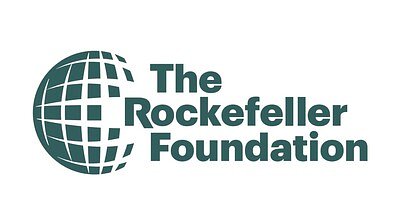
Cities Unite to Beat the Heat: $1M Initiative Targets Rising Urban Temperatures
A new global coalition of cities is launching a $1 million initiative to combat rising urban temperatures and protect vulnerable populations from extreme heat. But is it enough?
Cities Unite to Beat the Heat: $1M Initiative Targets Rising Urban Temperatures
By George Millen
As heat waves become more frequent and intense globally, cities are increasingly on the front lines of climate change. A new initiative, the Cool Cities Accelerator, aims to bolster urban resilience to extreme heat, with a $1 million investment to support 33 cities worldwide. While the program is lauded as a crucial step, experts question whether the funding will be sufficient to address the scale of the challenge and ensure equitable protection for all residents.
A Growing Crisis
Extreme heat is a silent killer, contributing to tens of thousands of deaths annually and exacerbating existing health inequalities. Cities are particularly vulnerable due to the “urban heat island” effect – a phenomenon where built environments trap heat, leading to significantly higher temperatures compared to surrounding rural areas. Concrete, asphalt, and a lack of green spaces all contribute to this effect.
“The urban heat island effect is real and it’s getting worse,” said an anonymous climate scientist specializing in urban heat mitigation. “We’re seeing temperatures in some cities exceeding 40 degrees Celsius (104 Fahrenheit) with alarming regularity, and the most vulnerable populations – the elderly, low-income communities, and those with pre-existing health conditions – are disproportionately affected.”
The Cool Cities Accelerator, a collaboration spearheaded by C40 Cities and funded by The Rockefeller Foundation, seeks to address this growing crisis through a multi-pronged approach. The initiative will focus on establishing city-level heat action plans, implementing early warning systems, expanding access to cooling centers, updating building codes, increasing tree cover, and improving urban infrastructure.
A Targeted Approach, But Is It Enough?
Participating cities represent a diverse range of geographic locations and climate conditions, including Bangkok, Delhi, Jakarta, New York, and Tokyo. The $1 million in funding will be distributed based on individual city needs and priorities, with a focus on implementing measurable actions to reduce heat risk.
“The goal is to help cities not just respond to heat waves, but also proactively prepare for them,” explained a representative from C40 Cities. “This means developing long-term strategies to reduce the urban heat island effect, improve building efficiency, and ensure that all residents have access to cooling during extreme heat events.”
However, some experts argue that $1 million is a drop in the bucket compared to the massive investment needed to address the scale of the problem.
“While this initiative is a welcome step, it’s important to be realistic about what can be achieved with limited funding,” said an anonymous urban planning consultant. “Many cities need significant investments in infrastructure upgrades, green space development, and social programs to truly protect their residents from extreme heat. $1 million will only scratch the surface.”
Equity Concerns and Implementation Challenges
Beyond funding limitations, ensuring equitable access to heat protection is a major challenge. Low-income communities and informal settlements often lack access to air conditioning, green spaces, and even basic cooling centers.
“We know that vulnerable populations are disproportionately affected by extreme heat, but they are also the least likely to have the resources to protect themselves,” said an anonymous public health official. “It’s crucial that these initiatives prioritize the needs of these communities and ensure that they have equitable access to cooling and other protective measures.”
Another challenge lies in implementation. Cities often face bureaucratic hurdles, political obstacles, and a lack of coordination among different agencies.
“Developing a heat action plan is one thing, but actually implementing it effectively is another,” said the urban planning consultant. “Cities need to have strong leadership, effective communication, and a commitment to long-term sustainability in order to truly make a difference.”
Lessons Learned and Future Directions
The Cool Cities Accelerator builds on lessons learned from previous urban heat mitigation initiatives around the world. Cities like Barcelona and Melbourne have implemented innovative strategies to reduce the urban heat island effect, such as expanding green spaces, promoting cool roofs, and implementing heat wave early warning systems.
“There’s a lot of knowledge out there about what works and what doesn’t,” said the climate scientist. “The key is to adapt these strategies to local conditions and to ensure that they are implemented effectively.”
Looking ahead, experts emphasize the need for a more comprehensive and integrated approach to urban heat mitigation. This includes investing in green infrastructure, promoting sustainable building practices, and addressing the underlying social and economic inequalities that make certain populations more vulnerable to extreme heat.
“This is not just an environmental issue, it’s a social justice issue,” said the public health official. “We need to ensure that all residents have the resources and support they need to stay safe and healthy in a changing climate.”
The Cool Cities Accelerator represents a positive step in the right direction, but it’s just one piece of the puzzle. Addressing the growing threat of urban heat requires a sustained and concerted effort from cities, governments, and communities around the world. Without significant investment and a commitment to equity, the most vulnerable populations will continue to bear the brunt of this growing crisis. The initiative, while welcomed, serves as a stark reminder that adapting to the effects of climate change requires not only innovative solutions, but also a fundamental shift in priorities and a commitment to protecting those most at risk.
